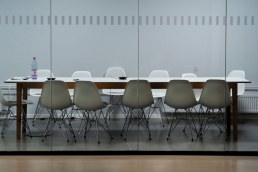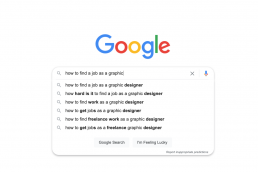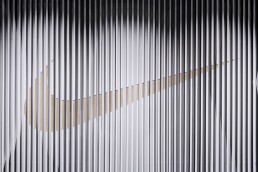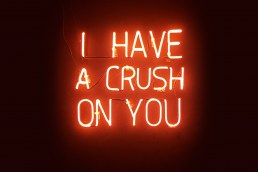Reading time
How to start as a graphic designer.
One day in the second year of design school, our teacher asked: “Who wants his first job as a designer for a company here in town?”
When I started design school, I felt like I was entering a new world. I met great people who happened to be very creative. They really inspired me since my background was the opposite of creativity. They shared with me the best they knew about cinema, music, photography, art, graphic design, typography, video editing, conceptual thinking… and I ate it up.
Back then, I didn’t think about a job, I just wanted to do things I liked at that moment: music, art and all types of photography and video. I did a lot of things like that in my first year. It was all very amateur, but I made some movie clips, I wrote a script for a short film and I even designed album covers and t-shirts – lots of them – of the bands I was listening to.
All this work was made with enthusiasm and passion. They were my first experiments in design. People around me saw what I was doing, and it didn’t take long before I was getting real assignments. They paid almost nothing, but I didn’t care much. It was about getting my work out in the real world.
I was still in my first year and I was terrified of making a huge mistake and ruining someone else’s business – as if that happened every day. But I knew I had to run those risks anyway. So in the first year of my studies, I already took work so I could start practicing, and these projects opened doors to many bigger things.
Experimentation is always enjoyable, but one day you realize that you need to make money, and working for friends is not enough. So you have to go out there, fill in your empty resume and portfolio, and be ready to accept anything. In the beginning, it is hard. But we all get there eventually.
This is one of the truths about the creative industry: you have to start by doing. Creating a portfolio should be the most important thing in your career, from the very first day. At the same time, you have to be practical. The point is to find a balance between producing your best creative work and getting some sort of income, even if that means doing work you don’t like. That is where many people get stuck. They do one thing or the other, but they don’t want to do both.
The product was not exciting, but I could do anything I wanted. So I had the freedom to make a real change in the company’s branding.
“Who came up with this identity?” – I asked the founder. He smiled and admitted that he did the logo himself, using clip art from Microsoft Word(!). I’d spent months of hard work on the catalogue. I couldn’t launch it with that identity, so I proposed a new one.
The new identity was based on the idea of precision as well. After many battles, I got my way with a logo only based on typography – way too minimalistic for their current communications style.
It was a radical change, but I insisted, fighting for months against him, his wife and the entire department. I just couldn’t imagine the catalogue with that clip art on the cover.
In the end I won the battle: I changed the brand identity and decided on a whole new art direction. I ended up developing a Swiss-style catalogue, minimalistic and elegant. The founder decided to sell the finished catalogue, something he had never done before. It sold really well at the fairs, and that catalogue became the first project that gave me real credibility.
After that, I started getting paid work and it even opened the doors for me to go abroad and get interviews with international companies. All despite the fact that my English was very poor. And the best of all is that, when people referred to that project, they always called it ‘the jewelry catalogue.’
You are the designer,just make it look nice.
What type of job? – I asked. My teacher said that it was for a small company in the city whose main service was to create precision tools for jewelry makers. The only thing I got from his answer was: “blah blah blah JEWELRY”.
I stopped listening to him. I envisioned a jewelry project on my website and I thought it could be exciting. I also figured the pay would be ridiculous, but who cares? I needed money and experience, so I decided to go and talk to the founder.
Since I spent the year before doing some little but real work, I had a small portfolio to show to him. So he could trust me, although to be perfectly honest, I didn’t really know what I was doing.
The job itself was not promising at first. It seemed incredibly boring and the tasks were fiddly and annoying. I had to photograph thousands of small pieces, cut them out and put all of them in a layout for a catalogue. It was everything but jewelry.
But during the interview, I clicked with the founder. He was a good man who just wanted someone who could take care of his product. After sharing some of my work with him, he decided to hire me.
The best thing was what he told me when I finished my first small project for him: “you can do anything you want. You are the designer, just make it look nice.” He told me that because of the real work I had shown him. It felt like I was already working as a professional, although I was still a student.
The point is that we all have to start somewhere, and the beginning is a key component in your development. Working for a small company or doing small projects like these can bring unique opportunities and let your work and creativity shine best.
Some people stay working for small companies all their lives, and that is fine as long as that makes them happy. But one day they might want more. So at some point, if you want to experience growth, you need to move to something bigger.
If you are already thinking in landing a job at a big company, read this article where I explain why it could be the best move of your career.









